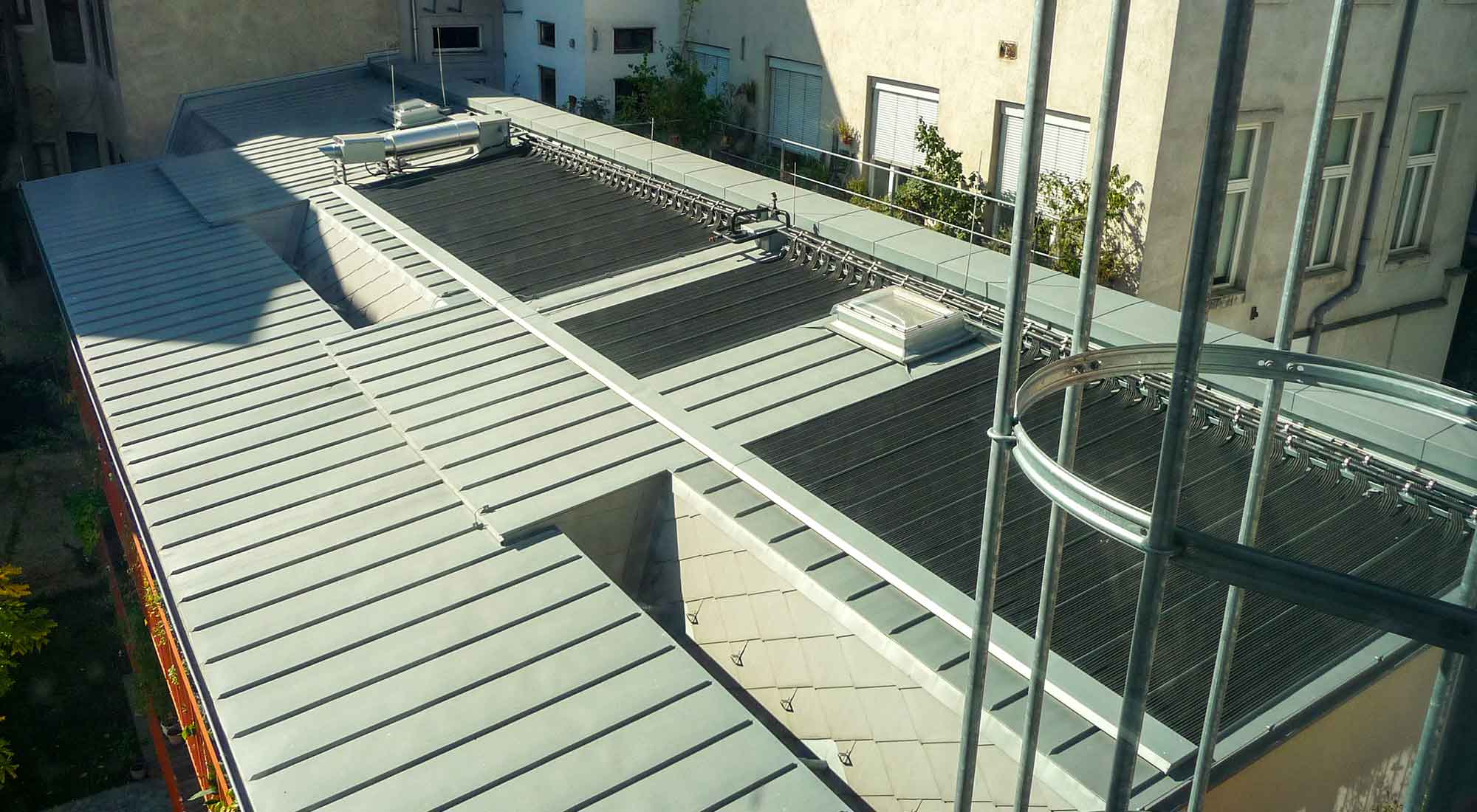The switch to renewable energy sources in the supply of heat and electricity is driving the decentralisation of the energy system. It will be necessary to integrate many new actors and many new components in the future. Coupling together all local, volatile energy producers, the heat and electricity consumers, the storage systems (building masses, heat and electricity storage systems) and the supply networks represent a complex task. There are currently no standardised solutions for an integrated energy supply system. Appropriately adapted solutions are needed for all applications, whether for individual buildings, whole neighbourhoods or renewable energy communities. Sector integration in the area of power-to-heat plays an important role here, offering tremendous potential for greater flexibility in the power and heat sector.
Transnational cooperation
The project Sol4City aims at covering a large share of the heat and electricity demand of multi-storey residential buildings from renewable energy sources through the intelligent coupling of various technologies. The first phase involved bilateral bundling of Austrian and German competences from research and industry1. The innovative concepts combine technologies that are already available (e.g. activation of thermal masses, PV and battery technologies, heat pumps, etc.) with new components such as PVT hybrid collectors, sorption collectors, vacuum thermal insulation and ice storage systems. Economical solutions are being developed for climate-neutral multi-storey residential buildings in urban environments. The goal is to enable high solar coverage levels in new and renovated buildings utilising components integrated in the building envelope. One central aspect of the concept is its consideration of the interaction with network infrastructure (electricity and heat).
Current research Topics
> Optimising the design and dimensions of all individual technologies with regard to security of supply and system integration
> Maximising the renewable energy production for covering heat and electricity demand (including e-mobility)
> Actively relieving the supply networks by utilising flexibility options inherent in buildings and systems
> Integrating model predictive control approaches and operational forecasting tools
> Definition of KPIs based on technical, economic and environmental criteria
The results of the bilateral project are also entering into international cooperation on the topic of climate-neutral buildings and city districts as part of the technology programme “Solar Heating and Cooling” (Task 66) of the International Energy Agency.

„In the bilateral project Sol4City, our product development work is supported by a large number of experts from universities and private research institutions across Austria and Germany. We welcome this bilateral collaboration, since it brings together the best research and development capabilities. Solar thermal energy already makes a considerable contribution to securing a sustainable heating supply. To further expand and improve this contribution, we are working on new and innovative concepts, such as combining PV and solar thermal in the form of a PVT hybrid collector as well as other technologies like sorption collectors. Renewable energy sources are indispensable in the current situation and show the way to a largely independent energy supply.“
Harald Poscharnig,
Head of Research and Development
GREENoneTEC Solarindustrie GmbH
nachhaltigwirtschaften.at/de/sdz/projekte/sol4city.php
1 Austrian project partners: AEE INTEC (project management), Institute of Polymeric Materials and Testing Johannes Kepler University Linz, GREENoneTEC Solarindustrie GmbH, SONNENKRAFT GmbH, KIOTO Photovoltaics GmbH, Kreisel Electric GmbH&CoKG, German project partners: IGTE University of Stuttgart, Viessmann Werke GmbH & Co KG
